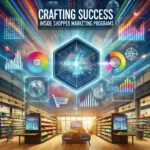Top Shopper Marketing Examples to Inspire Your Next Campaign
Introduction:
In the evolving landscape of retail marketing, shopper marketing has emerged as a powerful strategy to influence consumers at the point of purchase. By understanding shopper behavior and leveraging strategic touchpoints, brands can create compelling campaigns that drive conversions. Here are some top shopper marketing examples that can serve as inspiration for your next campaign.
1. IKEA’s Augmented Reality App:
IKEA’s Place app uses augmented reality (AR) to enhance the shopping experience by allowing customers to visualize how furniture would look in their homes before making a purchase. This innovative approach not only enhances user engagement but also reduces the likelihood of returns, creating a seamless shopping experience.
2. Unilever’s Personalized In-store Promotions:
Unilever partnered with leading retailers to implement data-driven personalized promotions. By using customer data and insights, they tailored in-store offers that resonated with individual shoppers, significantly increasing redemption rates and driving sales growth.
3. Starbucks’ Mobile Order and Pay:
Starbucks revolutionized the café experience by enabling customers to order and pay through their mobile app. This convenience minimizes wait times and enhances customer satisfaction, illustrating the importance of integrating technology to streamline the shopper journey.
4. Coca-Cola’s Share a Coke Campaign:
Coca-Cola’s “Share a Coke” campaign is a classic example of personalization by replacing its iconic logo with popular names on bottles. This strategy encouraged customers to find bottles with their own or friends’ names, driving both sales and brand interaction.
5. L’Oreal’s Virtual Makeup Try-on:
L’Oreal offers a virtual makeup try-on feature through its apps and digital kiosks in stores. By incorporating AR technology, customers can experiment with different looks without physically applying products, enhancing decision-making and encouraging product exploration.
6. Amazon Go’s Checkout-Free Shopping Experience:
Amazon Go stores introduced a checkout-free shopping experience that utilizes sensors and computer vision technology. Customers can grab items and walk out without waiting in line, demonstrating an innovative approach to convenience that reshapes traditional shopping processes.
Conclusion:
These examples highlight the diverse ways in which brands can implement effective shopper marketing strategies. Whether through technology integration, personalization, or innovative store experiences, the key lies in understanding customer needs and behaviors. By drawing inspiration from these successful campaigns, marketers can craft impactful strategies that engage and convert today’s savvy shoppers.








